Do you want to find an easy and inexpensive way to keep your clothes looking their best? Have you ever noticed dish liquid sitting on the counter and thought, “Can I use that for laundry?” Well, wonder no more because the answer is yes!
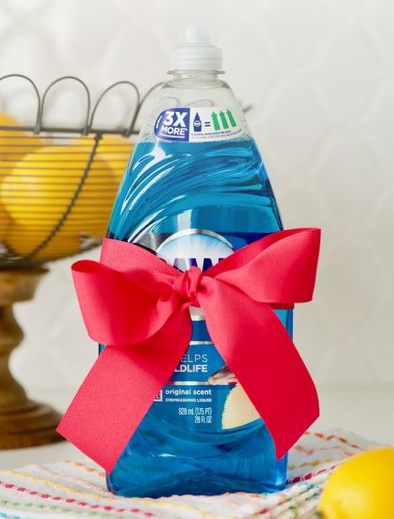
Dish liquid is a great alternative to laundry detergent and can be an effective way to clean and restore your clothing. Let us take you step-by-step through the process of washing your garments with dish liquid so that you can save time and money while cultivating some more sustainable habits in the home.
Table of Contents
Can You Wash Your Clothes With Dish Liquid?
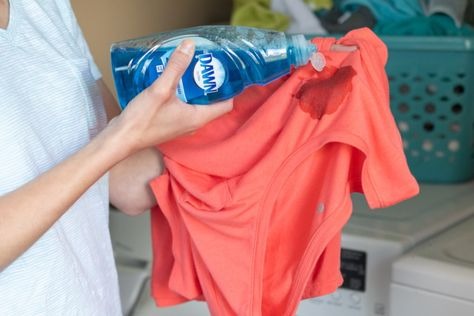
Can you wash your clothes with dish liquid? It might seem counterintuitive, but the answer is actually yes! While a more specialized detergent is always preferred, dish soap can be substituted in a pinch.
If you find yourself trapped at home without any laundry supplies, an unexpected alternative is available in the form of your trusty kitchen sink companion. Used on delicate fabrics and other larger items such as blankets, dish liquid offers a degree of cleanness without causing too much damage to fabrics.
Keep in mind this isn’t the ideal solution since it takes longer to rinse off and suds onto other clothing. But if you find yourself in an emergency pinch, perhaps due to forgetting your regular detergent while traveling, using dish liquid as a quick fix may just be the ticket.
How to Wash Your Clothes With Dish Liquid: 6 Simple Steps to Follow
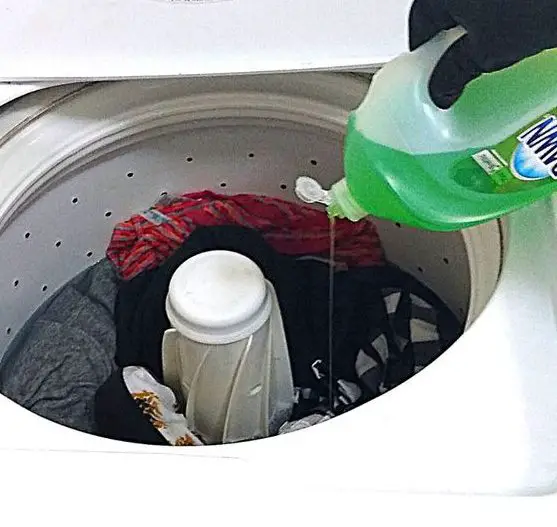
Washing your clothes with dish liquid may seem like an unconventional approach to laundry day, but it can be a great way to save a bundle of time and money. The process isn’t as complicated as you might expect – just follow the six simple steps outlined below.
Here’s what you’ll need:
- Washing machine
- Dish liquid of your choice
- Vinegar (optional)
Step 1: Choose the Right Dish Liquid
When it comes to washing your clothes with dish liquid, it pays to pick the right detergent. Any all-purpose dish cleaning product should be a good choice – just make sure it’s free of bleach, so no fabric bleaching accidents occur.
Scented dish liquids could leave residue on your fabric and irritate sensitive skin, so it’s best to opt for a scent-free kind. After all, if the goal is for your clothes to smell clean and fresh, leaving out the extra smells of perfumed soap is better anyways!
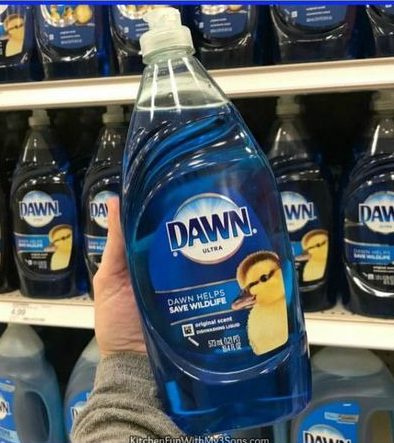
Step 2: Add Dirty Clothes to the Washing Machine
Now that you have your dish liquid ready, simply add your dirty clothes to the washing machine as you normally would. Sort your laundry appropriately; separate your whites and darks to avoid a colorful mishap! For heavy items like jeans or towels, keep them separate too so they don’t drag down lighter items and cause them to shrink.

Step 3: Use the Right Settings
First, consider the temperature settings on the washing machine. Hotter temperatures can clean clothes better, but you have to be careful – hot temperatures can just as easily negatively affect your clothing.

To avoid any mishaps with shrinking or discoloration, be sure to keep your more delicate and permanent press garments at low temperatures while allowing more durable colors to go on a warm wash and cold/warm rinse. The most durable white fabrics can be put through a hot wash cycle, followed by a cold rinse to lock in their whiteness.
Selecting the right cycle for your clothing depends entirely on its condition – soiled garments need longer cycles for proper cleaning, but these can wear out delicate items quickly. If your clothing is lightly soiled or labeled as delicate, a shorter cycle that has a gentler action is recommended.
Step 4: Add Dish Liquid and Wash Your Clothes
If you aren’t careful about how much dish liquid you add, you could end up with foam coming out of your washing machine. To get the perfect wash, use less dish detergent than you would when using regular laundry detergent.
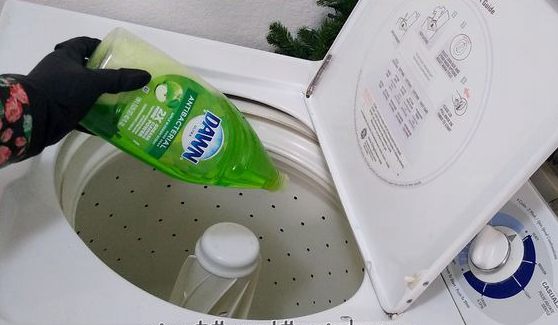
Start by measuring out 1 teaspoon for small loads, 2 teaspoons for medium loads, and 3 teaspoons for large loads – simple as can be! Similar to how you would pour laundry detergent into the washing machine, add the dish detergent.
After you’ve added the correct amount of dish liquid to the washer, follow the same procedure you usually would when washing your clothes as usual. Then sit back, relax, and let the magic happen!
Step 5: Add Vinegar (Optional)
As an optional step, try adding a cup of vinegar to the mix. Not only will it act as a frugal fabric softener, but it will also aid in getting out difficult dirt and grime. This additional step neutralizes odors, reduces static cling, and helps keep colors bright with every wash.
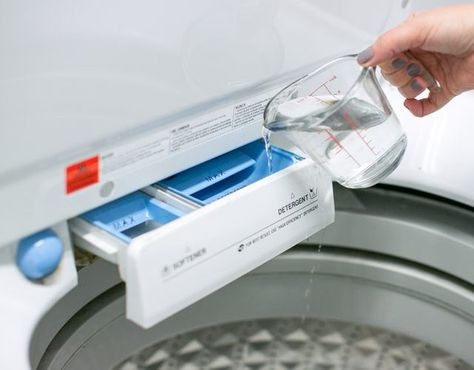
Step 6: Dry Your Clothes
The best way to dry your freshly-dish-soap-washed garments is by using a spin cycle on a washer or tumble dryer. This will help reduce dampness and keep your clothes looking their best!
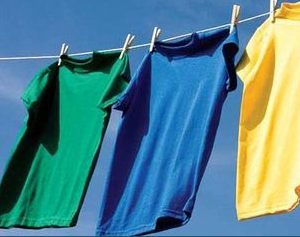
Allowing air drying is another option, although it should be done in direct sunlight wherever possible. Either way, making sure you dry your clothing right away will prevent any soap residues left behind from forming a stubborn stain that could eventually become permanent.
How to Hand Wash Your Clothes With Dish Liquid
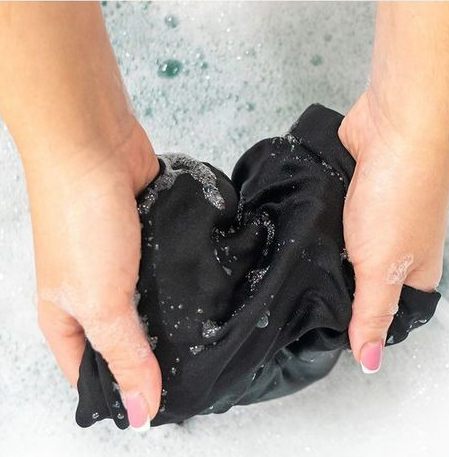
Hand-washing your clothes is often the best solution for delicate items – it’s just that it hasn’t always had a reputation as the easiest chore to tackle. But fear not, just follow the 6 steps outlined here. Here’s what you’ll need:
- Cold water
- Dish liquid of your choice
Step 1: Fill a Basin With Cold Water
To start, fill any large container you have with cold water, making sure that it’s enough to cover all of the clothes you’ll be washing. The cold water helps to keep garments looking newer for longer since it helps to make fibers less likely to stretch or shrink. It also preserves both the shape of the clothes, as well as their color.
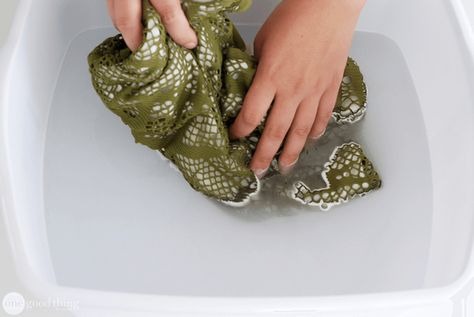
Step 2: Add Dish Liquid
You’ll need just the right amount of dish soap: too little will not get your clothes clean while adding too much can lead to residue and drying issues. Small loads should have 1 teaspoon, medium loads 2 teaspoons, and large loads 3 teaspoons of dish liquid to clean those fabrics thoroughly.
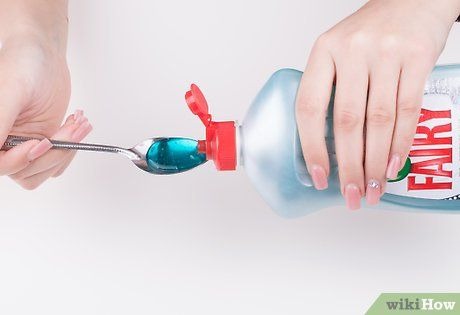
All that’s left is to swish the water around for a couple of minutes until frothy suds have formed – then you can start washing those clothes!
Step 3: Submerge the Clothes
Your next step is to swish your clothing around the bath for a few minutes until they’re covered in bubbles and finally submerge them completely. Let all the pieces soak for a good fifteen minutes before going to step number four.
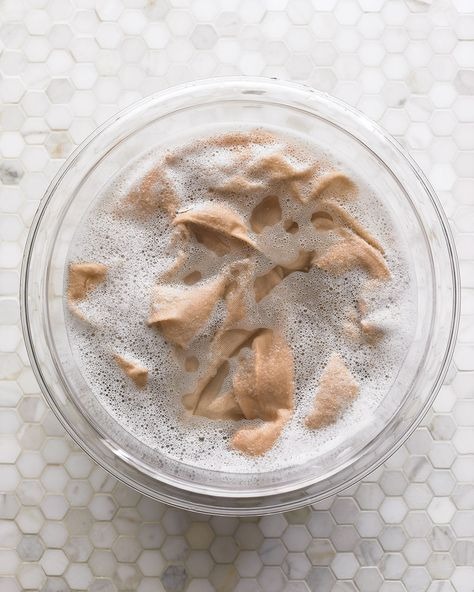
Step 4: Drain the Water
After soaking your clothes for 15 minutes, it’s time to drain the soapy water and give them a gentle squeeze. Drain the water and then get your hands involved by softly squeezing out any extra liquid still in the garment.
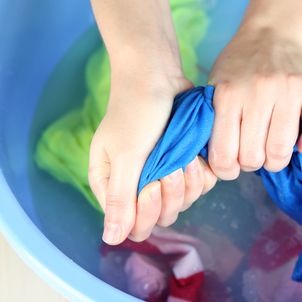
Pay special attention to any stains that need some extra treatment – you may need to break down these areas with your hands to get rid of them completely.
Step 5: Rinse in Cold Water
After washing your clothes with dish liquid, it’s time to give them a rinse cycle – except avoid using the washing machine this one time! Instead, rinse your garments in cold water to remove all traces of soapy residue.

Although dish liquid may not seem like a regular laundry item, rinsing away any excess soap is essential for ensuring that unwanted detergent isn’t lingering on your clothing!
Step 6: Dry Your Clothes
After your clothes have finished their soapy soak in dish liquid, you should make sure that they are immediately air dried. Not only will this help to prevent the build-up of bacteria and germs, but it also stops discoloration and a range of other potential fabric issues. The longer you leave wet garments sitting around, the more likely these problems become.
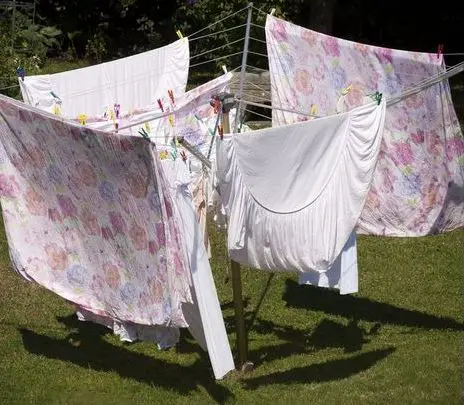
5 Secret Tips When Washing Clothes With Dish Liquid
Washing your clothes with dish liquid isn’t something you hear about every day – so if you’re game to try out this alternative laundry method, read on for our top five secret tips!
Check the Dish Liquid Ingredients
Check out the ingredients of the dish liquid; it’s worth making sure it doesn’t have any abrasive or caustic elements that would damage fabrics. Never opt for one with bleach; even if it is a major stain-fighting accessory in your kitchen, laundering clothes with dish liquid containing bleach won’t have the best outcome.
It’s also recommended to steer clear of scent; while aromas can be enticing even in laundry loads, perfumed soaps can leave marks and stains on certain items
Add Hydrogen Peroxide for Stubborn Stains
If you want your laundry to come out cleaner than ever, you should consider adding hydrogen peroxide to the mix. Sure, normal dish soap might remove some dirt, grime and the occasional stain – but try combining one part dish soap with two parts hydrogen peroxide for an intense cleaning agent.
Just remember to test it on a hidden area of the garment first! You don’t want any discoloration or damage ruining a perfectly good outfit.
Measure the Dish Liquid
One of the most important things is measuring the dish liquid you use for each load. It’s incredibly easy to get carried away and add too much without noticing. This can leave residue on garments causing them to feel stiff and uncomfortable, not to mention that a few tablespoons more than necessary is an unwelcome waste of money.
Use Ice to Prevent Wrinkles
Assuring your clothes come out wrinkle-free after washing is as easy as adding a single ice cube. When used to wash clothes, adding an ice cube to the load helps keep wrinkles at bay. The cool water prevents fibers from shrinking and keeps fibers relaxed, so that your final result – the dried clothing – boasts a smooth and wrinkle-free finish.
Use Vinegar or Baking Soda to Eliminate Static Cling
If you want to take it one step further, adding either white vinegar each time you rinse your clothes or baking soda each time you wash them is a fantastic trick for eliminating static cling. That way when you pull that cotton t-shirt out of the dryer, it won’t be clinging to your body like cellophane wrap on a cheese sandwich.
Final Thoughts
Are you sick of spending absurd amounts of money on washing powder but don’t want to sacrifice cleanliness? Solution: dish liquid! Washing your clothes with dish liquid may not seem like the traditional way of caring for your clothing, but in a pinch, it is a viable option.
Of course, it is important to follow the steps outlined above precisely. Great care must be taken to ensure that only enough dish liquid is used – too much and your clothes will look greasy and feel heavy. Good luck washing!
FAQ
Does dishwashing liquid get stains out of clothes?
While it might not smell as pleasant as your typical fabric-friendly cleaners, using dishwashing liquid to treat stains can certainly get the job done. Of course, given the potent ingredients necessary to remove grease from dishes, some caution should be exercised when transferring this over to laundry duty.
What’s the difference between dish soap and laundry detergent?
The easiest way to distinguish between dish soap and laundry detergent is that dish soap cuts grease while laundry detergent removes tough, ground-in stains.
Dish soap contains ingredients like extra surfactants and degreasers which make an excellent job of removing stubborn bits of food, fat, and oil deposits from dishes. Laundry detergents, on the other hand, possess special penetrating properties that allow them to easily penetrate fabrics and lift dirt away.
Why does the dish detergent need to be bleach-free?
Bleach is incredibly strong and can cause discoloration of clothes, especially when they are made out of 100% natural fabrics like cotton or linen. Even though bleach can be tough on stubborn stains, it’s also a strict no-no when it comes to colored clothing because it can actively strip the color out of them!
binance Registrera
Saturday 6th of April 2024
I don't think the title of your article matches the content lol. Just kidding, mainly because I had some doubts after reading the article.
binance napotitev
Friday 29th of March 2024
I don't think the title of your article matches the content lol. Just kidding, mainly because I had some doubts after reading the article.
Vytvorit osobní úcet
Monday 25th of March 2024
Can you be more specific about the content of your article? After reading it, I still have some doubts. Hope you can help me.
binance anm"alningsbonus
Tuesday 6th of February 2024
Can you be more specific about the content of your article? After reading it, I still have some doubts. Hope you can help me. https://www.binance.info/sv/join?ref=B4EPR6J0
Binance推荐
Tuesday 4th of July 2023
I don't think the title of your article matches the content lol. Just kidding, mainly because I had some doubts after reading the article. https://accounts.binance.com/zh-CN/register?ref=FIHEGIZ8